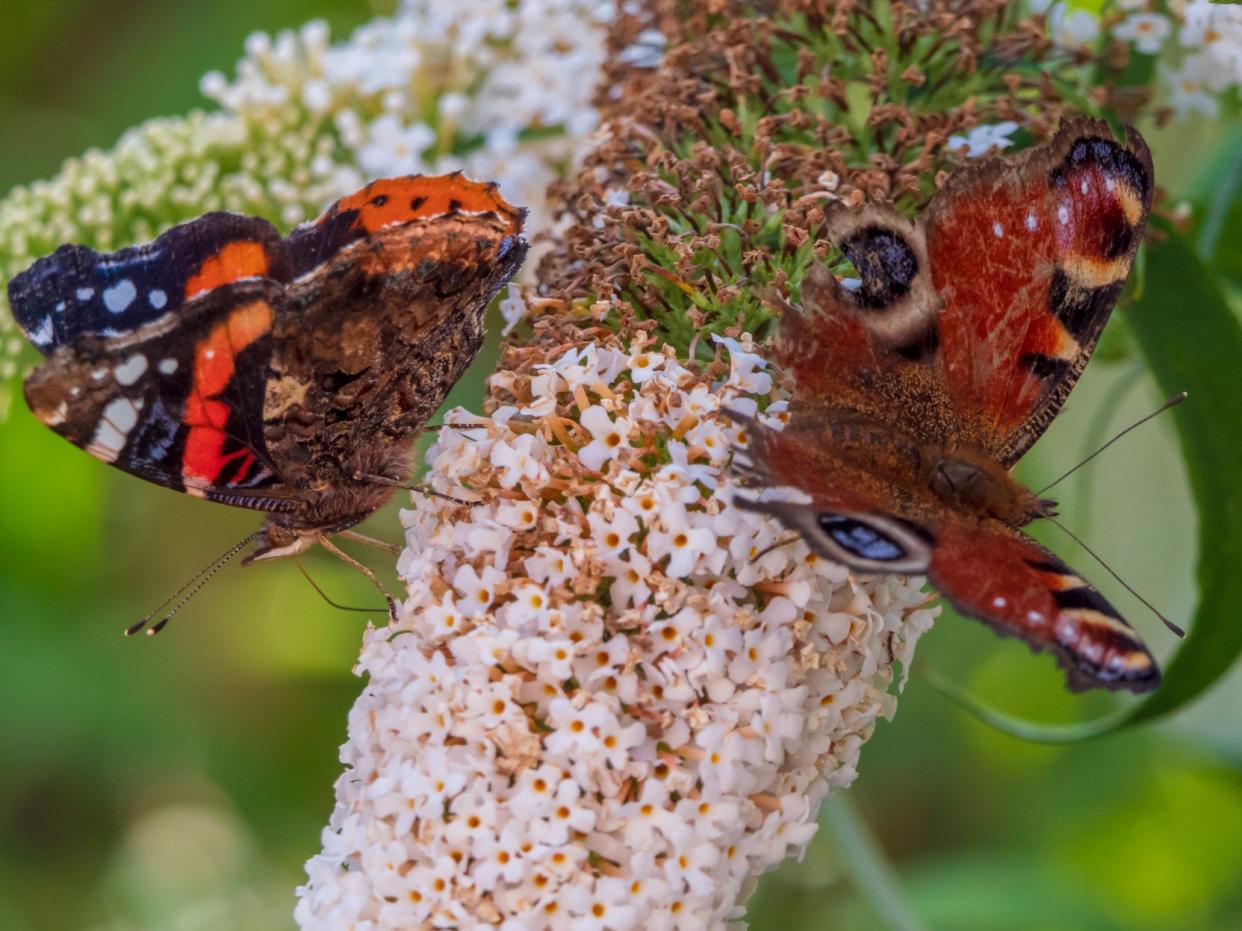Scientists take temperatures of 4,000 butterflies to reveal climate and ecological threats

Scientists who caught 4,000 wild butterflies in the UK and measured their temperatures have warned some of the country’s most recognisable species are under threat from climate breakdown and habitat loss.
Using hand-held nets, scientists from the University of Cambridge recorded the temperatures of 29 different species of butterflies, before then releasing them again.
All butterflies are ectotherms, meaning they can't generate their own body heat and are dependent on finding the optimal environmental conditions, but the study revealed changes to climate and other environmental factors affected some butterfly species more than others.
The scientists found that bigger and paler butterflies such as the Large White and Brimstone are among the species of the insects which are best adapted to environmental temperature increases. This is because they angle their large, reflective wings in relation to the sun, and use them to direct the sun's heat either away from, or onto their bodies. These species have either stable or growing populations.
But more colourful species such as the Peacock and Red Admiral have greater difficulty controlling their body temperature, and smaller species like the Small Heath butterfly have even greater difficulty.
The study found some butterfly species rely on finding a spot at a specific temperature within the microclimate of a landscape in order to control their body temperature.
Air temperatures vary on a fine scale, the researchers said. A shaded patch of ground is cooler than one in full sun, for example.
Some species such as the Brown Argus and Small Copper, are “thermal specialists”, and have suffered larger population declines over the last 40 years.
Overall, the populations of two thirds of UK butterfly species are in decline.
This is due to habitat loss and fragmentation, while more monotonous landscapes have removed many of the vital microclimates butterflies need to survive.
The climate crisis is compounding the problem by causing more extreme weather events and greater fluctuations in temperature, the scientists said.
“Butterfly species that aren't very good at controlling their temperature with small behavioural changes, but rely on choosing a micro-habitat at the right temperature, are likely to suffer the most from climate change and habitat loss,” said Dr Andrew Bladon, a postdoctoral research associate in the University of Cambridge's Department of Zoology, and first author of the report.
He said: “We need to make landscapes more diverse to help conserve many of our butterfly species. Even within a garden lawn, patches of grass can be left to grow longer — these areas will provide cooler, shady places for many species of butterfly. In nature reserves, some areas could be grazed or cut and others left standing. We also need to protect features that break up the monotony of farm landscapes, like hedgerows, ditches, and patches of woodland.”
The scientists said landscapes with a diversity of heights and features have a greater range of temperatures than flat, monotonous ones, and as a result are more suitable for butterflies.
“This applies on scales from kilometres to centimetres: from hillsides to flower patches. Such structural diversity creates different microclimates that many butterflies use to regulate their temperature,” the researchers said.
Butterflies are a vital part of the natural world, which supports our own species.
Insects, including butterflies, pollinate around 85 per cent of our crops — providing a vital service worth billions of pounds globally.
“Protecting a diverse range of species will provide long-term resilience,” the researchers said. “If numbers of one species fall, there are others to fill the gaps. Insects are also an important food source for many other species, including birds.”
Dr Ed Turner in the University Museum of Zoology, Cambridge, who led the work, said: “As we plan conservation measures to address the effects of climate change, it will be important to understand not only the habitat requirements of different butterfly species, but also their temperature requirements.
“With this new understanding of butterflies, we should be able to better manage habitats and landscapes to protect them, and in doing so we're probably also protecting other insects too.”
Many species of butterfly have expanded their range northwards over the last 30 years, as more northerly places have become warmer due to climate change.
But the ranges of species adapted to cooler environments are shrinking.
“These trends have been tracked for butterfly populations as a whole, but no previous study has investigated how the individual butterflies that make up these populations are able to respond to small scale temperature changes,” the research team said.
Dr Bladon added: “I like to think of butterflies as the gateway drug. If we can get people involved in butterfly conservation, that's the first step to getting them to care about insects more broadly.”
The research is published in the Journal of Animal Ecology.
Read more
Endangered large blue butterfly successfully reintroduced in Britain
Second person linked to butterfly sanctuary found dead in Mexico
High hopes for record butterfly numbers as Chris Packham launches annual count

 Yahoo News
Yahoo News 
